 Your new post is loading...
 Your new post is loading...
The H&M-backed fashion house ivyrevel has teamed up with Google and Mediamonks to push the boundaries of wearable technology to new limits. The trio have created the data dress: a personalized garment designed by collecting information from users via a smartphone app. Aptly named ‘coded couture,’ the app uses Google’s awareness API—a recent development for smarter applications. Announed at Google’s I/O developer conference last year, the new API facilitates the collection of data such as where you are, what you are doing, and even the local weather. This can now be employed by applications to react more intelligently to the current situation of every user. Already famous for their philosophy of merging fashion with innovative technology, swedish brand ivyrevel’s new app uses this personal information collected by Google for a seemingly alternative purpose – to create bespoke dresses. The application tracks its user’s daily activities, and translates the information into fabric form. The result? A data-driven dress that is tailored exactly to the needs of the wearer....
Don’t expect to see too many wearable devices like Apple Watches and Fitbits under Christmas trees this year—they’re not on many wish lists.eMarketer has significantly revised its estimates of wearable-device users in the US. The still-young category showed early promise, but usage has not expanded beyond early adopters. In October 2015, eMarketer expected usage among US adults to grow more than 60% this year. But according to its latest forecast, it will only grow 24.7%, as smart watches in particular have failed to impress consumers. This year, 39.5 million US adults will use a wearable device (with internet connectivity) at least once a month, far less than the 63.7 million previously forecast. Smart watches haven’t caught on in large numbers, primarily because of their high price point and lack of definitive use case. This year, usage of wearables will reach just 15.8% of the population. That penetration rate is only expected to grow to 21.1% by 2020....
While many companies, big and small, have been jumping into the wearables space in recent years, the use-cases for these devices often feels superficial — with fitness perhaps the most compelling scenario at this nascent stage. Yet smartwatches have far richer potential than merely performing a spot of sweat tracking.
The other problem with the current crop of smartwatches is the experience of using apps on wrist-mounted devices does not always live up to the promise of getting stuff done faster or more efficiently. Just having to load an app on this type of supplementary device can feel like an imposition.
If the primary selling point of a smartwatch is really convenience/glanceability the watch wearer really does not want to have to be squinting at lots of tiny icons and manually loading data to get the function they need in a given moment. A wearable needs to be a whole lot smarter to make it worth the wearing vs just using a smartphone.
At the same time, other connected devices populating the growing Internet of Things can feel pretty dumb right now — given the interface demands they also place on users. Such as, for example, connected lightbulbs like Philips Hue that require the user to open an app on their phone just in order to turn a lightbulb on or off, or change the colour of the light.
Which is pretty much the opposite of convenient, and why we’ve already seen startups trying to fix the problems IoT devices are creating via sensor-powered automation....
Wearables are one of the most exciting developments in technology, and have inspired the fashion industry in some intriguing ways. But there’s still plenty of skepticism about everything from battery life to appearance. Some even wonder if computers strapped to our bodies 24/7 could have adverse health effects (although, to be fair, it’s hard to see how wearables would be any different from an iPhone in that regard).
TO PUT IT BLUNTLY, WEARABLES ARE STILL UGLY.
Wearables are taking time to gather momentum. Google Glass was disbanded, and Apple hasn't disclosed how many watches it is selling. Even if sales are stronger than analysts estimate, the Watch hasn't exactly gotten glowing reviews. Even the most favorable reviews suggest it is not a device for "tech novices." Walt Mossberg at Re/Code went further, dubbing one wearable a "celibacy band."
If the people who test gadgets for a living are having trouble adapting, it’s safe to say we still have a few years before wearables will be relevant to typical consumers, much less those who care about looking stylish....
Wearables had a varied year in 2015, with a lot of hype and a few big winners streaking ahead of the field, leaving plenty of also-rans struggling to stand out.
It’s fair to say that the entire category is yet to prove whether it offers lasting utility or mere faddish novelty. The success of the smartphone is such than any supplementary technology inevitably lives in its shadow — and wearables are all about offering some kind of add-on functionality. Mobile undoubtedly still wears tech’s crown, and will do for the foreseeable future....
Two months after Amazon (Nasdaq: AMZN) announced a platform to connect appliances to the internet, Amazon Web Services’ Internet of Things is out of beta and available to customers.
The platform – similar to offerings from Microsoft (Nasdaq: MSFT) and IBM – can command smoke alarms and fitness trackers from computers.
Moreover, it extends far beyond the home; it can monitor and manage critical infrastructure such as wastewater treatment facilities and wind turbines.
The Internet of Things, as it is known, is big industry for tech companies working to connect devices to the cloud. Microsoft – which estimates there will be 30 billion connected devices by 2020 – launched in the space last year with its Azure platform. Google-owned home automation company Nest, which makes smart thermostats and other connect devices, announced earlier this year plans to open a Seattle-area engineering center and hire 100 employees....
Many corporate investors and smart money VCs have placed significant bets on the Internet of Things industry, which is expected to see nearly $2B in funding through the end of 2015.
Which firms are most active? We used CB Insights data to rank VCs by their unique IoT investments over the past 5 years.
Intel Capital tops the list as the most active investor in IoT startups, followed by Qualcomm Ventures. Both small-chip companies’ venture arms have been active investors in wearables startups and sensor companies. Since Intel and Qualcomm are involved in designing and/or manufacturing ever-smaller chips to power mobile devices, this area likely offers them strategic value....
There’s only a “moderate appetite” for wearables that can improve health and wellness.
Does the public’s hesitation reflect lackluster messaging? How might medical marketers team with doctors and clinicians to help consumers embrace wearable technology?
Recent data show that chronic conditions are managed better when patients participate in their monitoring and treatment. Communicators can look at this infographic and cite the benefits in their own marketing. ...
The wearables industry has cooled off in 2015, with deals and funding down from last year, but a few dozen startups have carved out a place for themselves in certain industries and are taking on established players. We used CB Insights data to identify 42 startups attacking fitness, apparel, healthcare, to name just a few of the areas. We mapped out the startups — one-fourth of them early-stage companies — in the graphic shown below. ...
Hitting up CES in Las Vegas this January? If you're like many marketers, the rapid developments in consumer technology are impacting how you're approaching your job. Disruptive technologies transform consumer behavior and change how marketers get their messages across. That's why staying ahead of the next big thing has never been more important.
We've been through the year of mobile and the year of data. So what breakthrough will shift the balance this year? We've outlined five of the top technologies you'll want to keep your eyes on as you're scouring the CES show floor..
Wearable tech will not only provide brands with more access to their ideal target audience but it will also produce vital communications information, allowing brands to customize their messaging, target audience individually based on the available rich data aggregated by these new devices.
Being this close is an advertiser’s sweetest dream, but it’s important to keep in mind that the conversation needs to change once again and to be consistently reminded of the need of user privacy. What wearable tech can do for your brand and how your advertising may need to change?...
Just over half of marketers expect the Internet of Things, with ubiquitous, embedded devices constantly conveying real-time data, to revolutionize marketing by 2020. Along with this they see the power of real-time personalized mobile communication as one of the biggest trends.
Here are the trends that marketing executives see as having the biggest impact on marketers within five years: - 51% -- Internet of Things
- 50% -- Real-time mobile personalized transactions
- 29% -- Wearable technology
- 26% -- Virtual/augmented reality
- 13% -- Privacy backlash...
But with the impending convergence of in-home connected devices, such as smart refrigerators, washing machines, and coffee makers, and technology platforms for instant replenishment, such as Amazon Dash, the home and shelf are merging. Why would a consumer need a shopping list, or have to visit a store, when their consumable items just show up at their home when they need them?...
|
It’s a wait and see moment for wrist-worn devices. After a few years of betting heavily on the space, this most recent CES didn’t offer much; save for two or three smartwatch announcements, some partnerships and a couple of middling bands, the industry seems to have largely shifted its focus toward the connected home and the seemingly attainable dream of sticking Alexa in everything. Some of the hesitation on the part of manufacturers no doubt owes much to the delay of Android Wear 2.0 — which really couldn’t have come at a less opportune time, missing both the holiday rush and the biggest tech show of the year. The latest version of Google’s wearable operating system is due out next month — likely February 2. When it arrives, it’ll greet an industry licking its wounds. The disappointing CES was really par for the course following a fairly lackluster — and in some cases toxic — 2016....
Nearly 250 years later, in a world defined by technological change, we see the same fears and concerns. As of September 2015, Amazon had 30,000 Kiva robots automating its warehouses, increasing efficiency and reducing the need for pick-and-pack labor. And at the same time, demand for software developers continues to rise, as Marc Andreessen’s famous 2011 statement that “software is eating the world” becomes ever more true.
Over the next decade, we’ll see this pattern play out once more in the nascent Internet of Things (IoT). With an industry defined by “bringing physical things online,” many IoT business models are predicated on improving efficiency by eliminating labor. We see companies connecting garbage cans to the internet to improve the efficiency of deploying waste collectors — which means we’ll need fewer waste collectors. Drones are dramatically reducing the time it takes to survey a plot of land — which means we’ll need fewer surveyors. Every industry that involves electronics or equipment can expect to be disrupted in this way over the next 10 years.
So the same question that was asked in the late 1700s remains: Will this new technology eliminate jobs? No....
Welcome to Part 3 of our latest blog series giving you early access to the upcoming BrainXchange-Hewlett Packard Enterprise white paper. In Parts 1 and 2, we shared examples from the automotive and heavy equipment industries. Today, we will look at how a thread manufacturer could employ an advanced collaboration platform like HPE’s MyRoom/VRG along with wearable technology to better support and train the end users of its products....
The acceptance of mobile payments in countries such as Japan, North America and some Western European countries will lead to 50% of consumers in such mature markets using a wearable device or their mobile device to make payments by 2018.
Three types of mobile payments or wallets were identified by Gartner, namely smartphones or wearable tech, branded mobile wallets from banks or credit cards and branded mobile wallets from retailers.
However, rather than mobile payment wallets that are tied to a device, Gartner forecasts that cloud-based solutions will have a better rate of adoption as they are able to "reach a wider audience and can support many use cases beyond face-to-face or in-store options".
Last year, a report on wearable payments from Tractica predicted transaction volumes will increase significantly over the next five years rising from around $3.1billion in 2015 to $501.1billion by 2020 and accounting for about one-fifth of all mobile transactions and 1% of all cashless payments in retail....
'The year of...' is a much-derided term among many in the digital industry. But statistics published recently by enterprise software giant Adobe indicate 2016 will be the year wearables become a mainstream concern for marketers, as over half of all smartphone owners have already used a household device connected to the internet.
Adobe Digital Index (ADI) Digital Trends Report examines the development of the Internet of Things (IoT) and consumer attitudes towards 'wearables', such as the Apple iWatch, and the knock-on effect on how users will access the internet.
The report claims 51 per cent of existing smartphone owners have already interacted with a home-based IoT device - such as a thermostat that can be controlled via a smartphone app.
Adobe also examined user sentiment towards such trends by analysing attitudes expressed in over 20 billion social media interactions, finding that 33 per cent of those analysed had used a digital personal assistant service, such as Apple's Siri, in the last 30 days. ...
The Internet of Things will be made up of many things that are constantly on the move.
Many of the connected objects will be stationary, of course, and a lot of those already are being put in place.
There are the obvious smart objects, such as connected thermostats at home and beacons in stores.
And then there are some that are not so obvious, such as the 100 Los Angeles street lights with Wi-Fi built in and the small cells inside manhole covers in Zurich that are linked to the landline infrastructure....
The promise of IoT is "smart" everything. Nest's Internet-connected Learning thermostat, Nest Cam surveillance camera, and Protect networked smoke alarm promise a more energy-efficient, safer home. IoT technology is a key part of the pitch for "smart cities," "smart buildings," "smart factories," and just about every other "smart" proposal from sensor manufacturers, networking companies, and big technology consultancies. Seemingly everyone is looking for a piece of the biggest potential collection of integration projects ever. Sometimes the "smart" is relatively close to the sensor itself, but it often relies on a remote cloud service or data center to process the information and control actions.
On the consumer side, while devices like Nest's get much of the attention, wearable IoT devices are just starting to take off—despite the relatively low impact so far of high-profile efforts like the Apple Watch. "The Apple Watch may be on a slower liftoff cycle than other recent Apple hardware launches, but it has a complex number of use cases which are finding their home, purpose, and meaning," said Mark Curtis, the chief client officer at Fjord, Accenture's design consultancy. Within the next two to three years, he predicted, wrist-based devices will lose the need to be tethered to a smartphone. "At the same time, interactions between wearables and nearables (e.g., beacons, Amazon Echo, connected cars) will grow."
The health field is the most immediate fit for wearables, because they can gather data that has a benefit without conscious human action. "A good example is our Fjord Fido diabetes platform," Curtis said. "It requires complex linking between devices and data but would not have been possible without a smartwatch."...
Wearable technology has moved beyond fancy prototypes and firmly established itself as an evolving product category. Nowadays, wearable technology is becoming more common and companies have started creating a steady stream of new devices that can be worn on the wrist, head, eyes and body for communication. Here is a glimpse of newbie and most effective wearable gadgets with their potential applications....
Marketers would love to know what's going on inside your head when you watch their commercials — and now they can find out, thanks to a technique called neuromarketing.
Brainsights is a Toronto company that specializes in scanning people's brainwaves in order to see if they're responding to companies' messages and content, whether they're emotionally engaged, and whether they'll remember any of it."
For advertisers, for anybody in communications, this is kind of a holy trinity," said Dan Iwasa-Madge, the company's head of products and analysis during a presentation at the Wearable Entertainment and Sportsconference in Toronto Tuesday....
Asia Pacific was home to 34% of the worlds, connected wearables last year. It is estimated that by 2025, the global wearable technology market will be worth some 70 billion U.S. dollars. So far, fitness and health related functions are dominating the space, as well as devices that can form linkage to functions currently available in a Smartphone, such as GPS. But is this just a playground for the big tech companies and early adopters? Or is this a significant shift in the way we will lead our lives?
The key question this piece of market research aims to discover, is whether or not we actually know our consumers well enough, in terms of their acceptance and expectations of such products. Are consumers in Asia Pacific playing catch up, or are they actually leading this trend in consumer wearable technology? How can marketers and manufacturers succeed in this area?...
We know the Internet of Things is big and going to be massive in scope, impacting all aspects of marketing and communication.
Some recent data points from some of the very large companies fueling the growth yet again highlight just how big a deal this is.
Within five years, 200 billion so-called smart objects will be deployed, according to Intel’s latest guide to all things IoT. That translates to 26 smart objects for every human being on earth....
For all the posturing that’s gone on surrounding wearable technology in recent years, there’s an unlikely front runner: Ralph Lauren is about to put its sexy black PoloTech on sale for $295, ready to transmit your every workout move straight to your iPhone.
While other companies, including Adidas, Athos and Victoria’s Secret, already market products using similar technology, the PoloTech is the first luxury fashion brand to enter the space, proving that technology doesn’t have to look dorky.
For more than a decade, tech and athletic companies have been tinkering with wearables that target “elite, and even professional, athletes,” says Angela McIntyre, research director at Gartner, who follows wearables and connected apparel. “What I get excited about is fashion-forward companies like Lauren even acknowledging that smart garments can move away from the more serious fitness buff to everybody, and into mainstream fashion.”...
|



 Your new post is loading...
Your new post is loading...



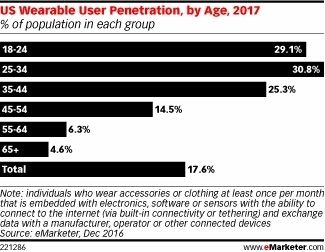




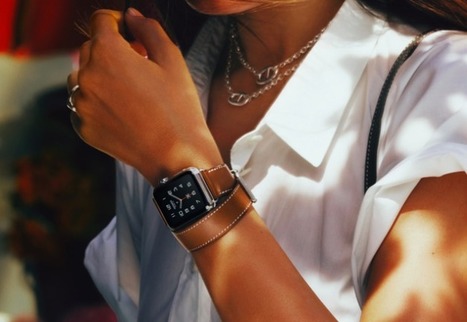


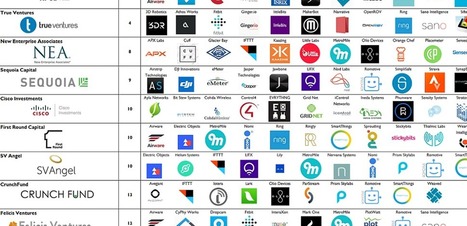

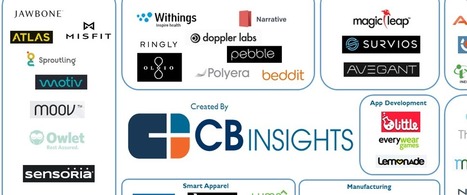

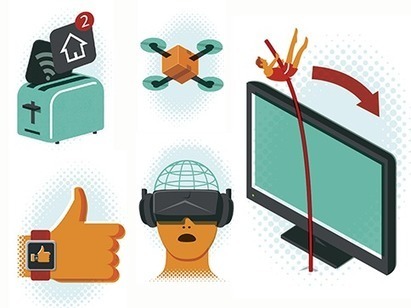
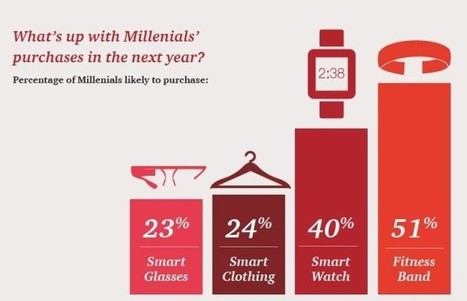






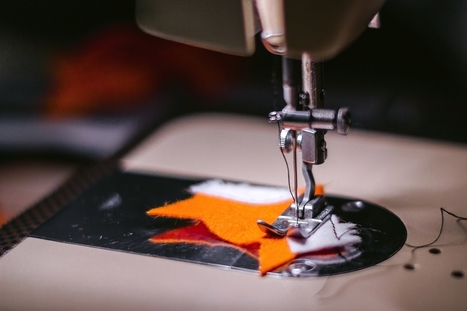

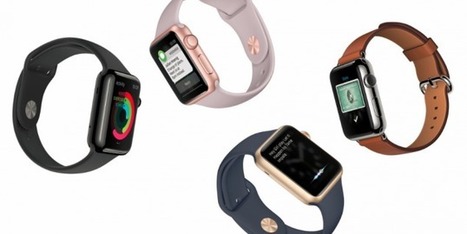

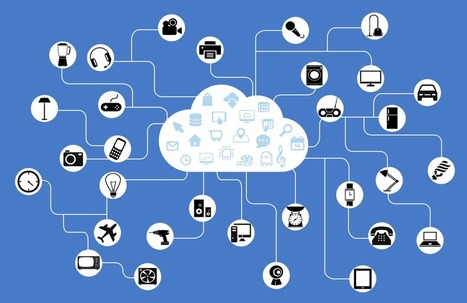

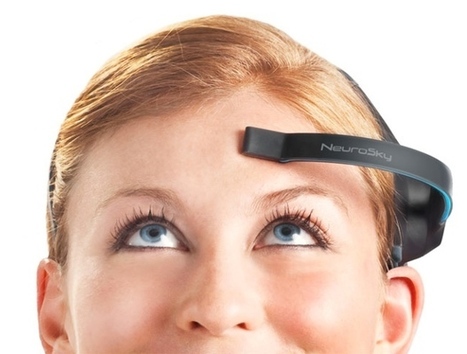
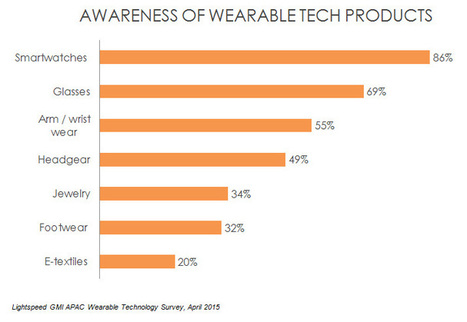

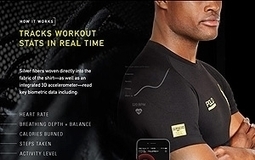





Google x ivyrevel's new data-driven dress takes personal information from your smartphone to create a design that is perfectly tailored to your lifestyle.